
The Enchanting French Riviera
Discover the timeless allure of the French Riviera, where Mediterranean beauty meets cultural richness and luxurious charm.
The French Riviera, or Côte d'Azur, is one of the most alluring destinations in the world. Nestled along the Mediterranean coast in the southeast of France, this region is famous for its stunning beaches, luxurious resorts, and charming seaside towns. From the glamour of Cannes and Monaco to the artistic haven of Saint-Paul-de-Vence, the French Riviera offers a unique blend of natural beauty, culture, and sophistication. One of the highlights of the French Riviera is its stunning coastline, dotted with pristine beaches and hidden coves. The azure waters are perfect for swimming, sailing, or simply relaxing on the shore. The Promenade des Anglais in Nice is a must-visit, offering a scenic walk along the Mediterranean with breathtaking views. Beyond the beaches, the French Riviera is a cultural treasure trove. The region has been a muse for many artists, including Picasso and Matisse, whose works are displayed in local museums. The charming villages like Èze and Grasse offer a glimpse into traditional Provencal life, with their narrow streets, artisan shops, and fragrant lavender fields. The culinary scene in the French Riviera is also something to behold. From fresh seafood to Provençal specialties, the local cuisine is a feast for the senses. Enjoy a leisurely meal at a seaside bistro, or explore the vibrant markets where you can sample regional delights like socca and ratatouille. Whether you're seeking relaxation, adventure, or cultural enrichment, the French Riviera has something for everyone. Its combination of natural beauty, rich history, and modern luxury makes it a timeless destination that continues to captivate visitors from around the globe.
Local tips in French Riviera
- Visit during the shoulder seasons (spring and fall) for fewer crowds and pleasant weather.
- Use the efficient train service to travel between coastal towns; it's faster and more scenic than driving.
- Try the local markets for fresh produce and regional specialties; the Cours Saleya in Nice is a popular choice.
- Pack comfortable shoes for exploring the hilly villages and cobblestone streets.
- Don't miss the chance to visit the perched village of Èze for panoramic views of the Mediterranean.
The Enchanting French Riviera
The French Riviera, or Côte d'Azur, is one of the most alluring destinations in the world. Nestled along the Mediterranean coast in the southeast of France, this region is famous for its stunning beaches, luxurious resorts, and charming seaside towns. From the glamour of Cannes and Monaco to the artistic haven of Saint-Paul-de-Vence, the French Riviera offers a unique blend of natural beauty, culture, and sophistication. One of the highlights of the French Riviera is its stunning coastline, dotted with pristine beaches and hidden coves. The azure waters are perfect for swimming, sailing, or simply relaxing on the shore. The Promenade des Anglais in Nice is a must-visit, offering a scenic walk along the Mediterranean with breathtaking views. Beyond the beaches, the French Riviera is a cultural treasure trove. The region has been a muse for many artists, including Picasso and Matisse, whose works are displayed in local museums. The charming villages like Èze and Grasse offer a glimpse into traditional Provencal life, with their narrow streets, artisan shops, and fragrant lavender fields. The culinary scene in the French Riviera is also something to behold. From fresh seafood to Provençal specialties, the local cuisine is a feast for the senses. Enjoy a leisurely meal at a seaside bistro, or explore the vibrant markets where you can sample regional delights like socca and ratatouille. Whether you're seeking relaxation, adventure, or cultural enrichment, the French Riviera has something for everyone. Its combination of natural beauty, rich history, and modern luxury makes it a timeless destination that continues to captivate visitors from around the globe.
When is the best time to go to French Riviera?
Iconic landmarks you can’t miss
Place Giuseppe Garibaldi
Experience the vibrant atmosphere of Place Giuseppe Garibaldi, a historic square in Nice, filled with culture, cuisine, and captivating architecture.

Royal Fort
Uncover the rich history and breathtaking views of Royal Fort on Île Sainte-Marguerite, a must-visit historical landmark in Cannes.

Fort du Mont Alban
Discover the breathtaking views and rich history at Fort du Mont Alban, a must-visit historical landmark in Nice, France.

Abbaye de Lérins
Explore the tranquil Abbaye de Lérins on Île Saint-Honorat, a historic monastery with stunning views, serene gardens, and a peaceful atmosphere perfect for reflection.
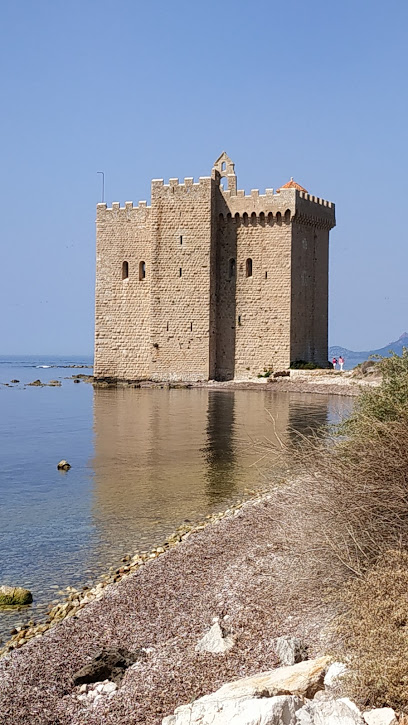
Fort de la Revère
Explore the breathtaking views and rich history of Fort de la Revère, a hidden gem in Èze that offers a perfect blend of nature and heritage.

Rue Pié
Explore the enchanting Rue Pié in Roquebrune-Cap-Martin, a historical landmark blending cultural charm and stunning Mediterranean views.

Grande Corniche State Park
Discover the breathtaking landscapes and rich biodiversity of Grande Corniche State Park, a national gem on the French Riviera.

Centenary Monument
Explore the Centenary Monument in Nice, a significant historical landmark celebrating the city's rich heritage and architectural beauty.

Monte Carlo Viewpoint
Experience stunning panoramic views of Monaco and the Mediterranean at the iconic Monte Carlo Viewpoint, a must-see attraction in La Turbie.

Villa Santo Sospir
Discover the artistic charm of Villa Santo Sospir in Saint-Jean-Cap-Ferrat, a serene blend of culture and breathtaking Mediterranean vistas.

Château de la Croë
Explore the stunning Château de la Croë in Antibes, a historical castle offering breathtaking views and rich history along the beautiful French Riviera.

What To Do Riviera
Experience the best of Antibes with What To Do Riviera—your gateway to stunning beaches, rich history, and vibrant local culture.

Tour du Masque de fer
Explore the mysterious tale of the Man in the Iron Mask at Cannes' captivating Tour du Masque de Fer museum, where history comes alive.

L'Ange de la Baie by Jean-Marie Fondacaro
Discover the enchanting L'Ange de la Baie by Jean-Marie Fondacaro, a stunning sculpture along Nice's famous Promenade des Anglais.

French searchlight position
Discover the historical significance and breathtaking views at the French searchlight position, a unique landmark in Nice, France.

Unmissable attractions to see
Villa Ephrussi de Rothschild
Discover the opulence of the Villa Ephrussi de Rothschild, a museum of art and gardens along the stunning French Riviera.

Roc D'Azur
Explore Roc D'Azur in Fréjus: A Leisure Center Offering Adventure, Sports, and Scenic Relaxation for All Ages.

Port de Sainte Maxime
Explore Port de Sainte Maxime: A Beautiful Marina with Stunning Views, Vibrant Culture, and Mediterranean Delights Awaiting You.

Royal Fort
Explore the Royal Fort on Île Sainte-Marguerite, a historical fortress offering stunning views and a glimpse into France's military past.

Grimaud Karting Loisir
Experience the thrill of go-kart racing in the stunning landscapes of Grimaud at Grimaud Karting Loisir, where adventure awaits for all ages.

SEAKART JET ADVENTURE Les Issambres
Experience the thrill of piloting your own Seakart while exploring the breathtaking Mediterranean coastline at Seakart Jet Adventure in Les Issambres.

Botanical Garden
Discover the lush beauty and tranquility of Sainte-Maxime's Botanical Garden, a captivating haven for nature lovers and peace seekers.
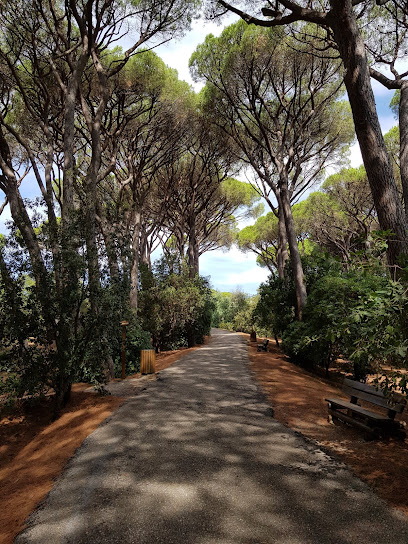
Bouillabaisse beach
Discover Bouillabaisse Beach in Saint-Tropez: the perfect blend of serenity and vibrant seaside charm along the stunning French Riviera.

French Riviera Wine Tours
Discover the heart of viticulture with French Riviera Wine Tours, where stunning landscapes meet exquisite wines in an unforgettable experience.

What To Do Riviera
Unlock the magic of Antibes with 'What To Do Riviera' - your ultimate travel guide to the French Riviera's enchanting attractions and experiences.

Plage de Pampelonne (Gros Vallat)
Experience the beauty and vibrancy of Plage de Pampelonne, a premier destination on the French Riviera offering sun, sand, and sophistication.
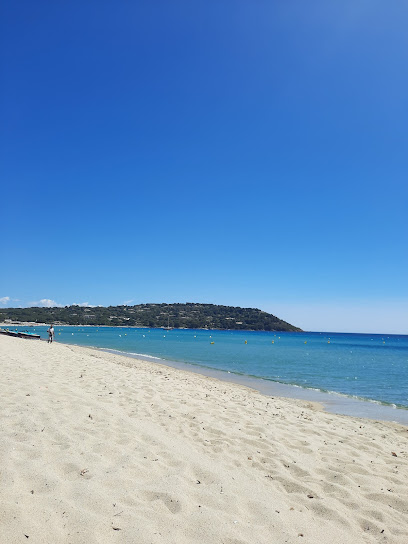
Le moulin
Explore the serene beauty and rich history of Le Moulin, a charming tourist attraction in Grimaud, France, perfect for a peaceful escape.

Obs Crique IPA
Discover the serene beauty of Obs Crique IPA, a stunning coastal gem in La Croix-Valmer perfect for relaxation and adventure.

Le hashtag géant de la ville de Sainte-Maxime | #saintemaxime
Experience the enchanting beauty of Sainte-Maxime, a coastal gem on the French Riviera, with stunning beaches, vibrant markets, and rich cultural heritage.
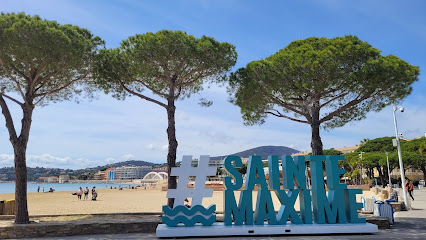
Feu de la jetée Nord
Discover the enchanting Feu de la jetée Nord in Grimaud, a historic lighthouse offering breathtaking views and a taste of maritime heritage.

Essential places to dine
Le Figuier de Saint-Esprit
Experience culinary artistry at Le Figuier de Saint-Esprit in Antibes—where haute French cuisine meets exceptional service in a charming setting.
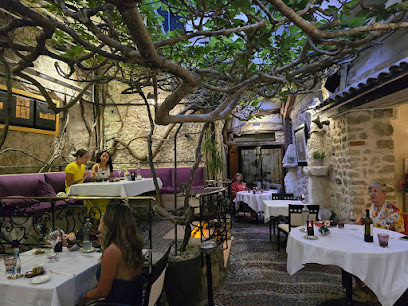
Le Chantecler
Experience exquisite French cuisine at Le Chantecler in Nice - where elegance meets culinary artistry in a stunning setting.

L'Or Bleu
Experience exquisite French cuisine with stunning Mediterranean views at L'Or Bleu in Théoule-sur-Mer.

Carlton Restaurant
Experience unparalleled French-Mediterranean dining at Carlton Restaurant on Cannes' famous Croisette.

Restaurant Arnaud Donckele & Maxime Frédéric at Louis Vuitton
Discover gourmet dining excellence at Restaurant Arnaud Donckele & Maxime Frédéric in Saint-Tropez's luxurious White 1921 Hôtel.

La Table de Patrick Raingeard Eze
Experience exquisite Mediterranean fine dining at La Table de Patrick Raingeard in Èze, where every meal is a celebration of flavor and view.

L'Olivier de la Bastide
Experience exquisite French-Mediterranean cuisine at L'Olivier de la Bastide in the heart of glamorous Saint-Tropez.

Le Cap
Discover culinary excellence at Le Cap in Saint-Jean-Cap-Ferrat - where Mediterranean flavors meet elegant fine dining amidst stunning sea views.

La Table du Royal
Experience exquisite French cuisine with breathtaking Mediterranean views at La Table du Royal in Saint-Jean-Cap-Ferrat.

Markets, malls and hidden boutiques
Galeries Lafayette Cannes
Discover luxury and variety at Galeries Lafayette Cannes, your ultimate shopping destination for fashion, beauty, and unique gifts.

DIOR Saint-Tropez Store
Experience luxury and elegance at DIOR Saint-Tropez, where fashion meets the charm of the French Riviera.

Mes Demoiselles | Magasin rue d'Antibes | Cannes
Discover Mes Demoiselles in Cannes for the latest in women's fashion, bridal wear, and chic accessories in a stylish boutique setting.

Mood Concept Store Apple Authorized Reseller Marshall
Explore Mood Concept Store in Saint-Tropez, your go-to destination for electronics, fashion, and unique accessories.
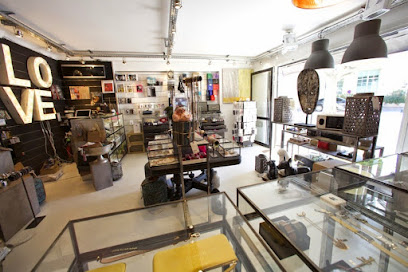
JUST IN PROVENCE
Discover the flavors of Provence at Just in Provence, your go-to gift basket store in the heart of Cannes, offering local delicacies and unique souvenirs.

I love Cannes
Discover unique souvenirs and local treasures at 'I Love Cannes', a charming gift shop in the heart of the French Riviera.

The Shop 17
Discover the essence of Cannes fashion at The Shop 17, offering chic clothing and accessories along the glamorous Croisette.

Outlet store by la clef des marques
Shop trendy designer clothing at Outlet Store by La Clef des Marques in Saint-Tropez for unbeatable prices and a chic shopping experience.

Cadeaux Côté Soleil Décoration
Explore Cadeaux Côté Soleil Décoration in Cannes for unique gifts and local treasures that embody the spirit of the French Riviera.

Les Galeries Tropeziennes
Discover the elegance of Saint-Tropez shopping at Les Galeries Tropeziennes, where style meets local charm in a sophisticated clothing store.

Vicomte A.
Explore stylish clothing at Vicomte A. in Saint-Tropez, where French Riviera fashion meets vibrant designs for the perfect shopping experience.
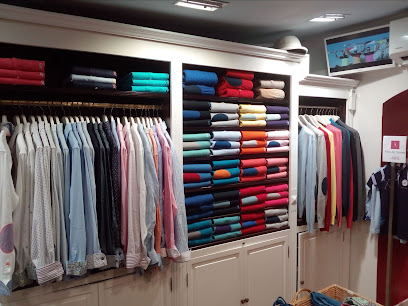
Happy Libellule
Explore Happy Libellule in Saint-Tropez for chic fashion accessories, stylish women's wear, and adorable children's clothing, all in a vibrant beach setting.

ICONIC Family Store Saint Tropez
Shop the latest fashion trends at the ICONIC Family Store in Saint Tropez, renowned for stylish T-shirts and chic clothing.

Saint Laurent
Discover the epitome of luxury fashion at Saint Laurent in Saint-Tropez, where elegance and style converge in a stunning shopping experience.
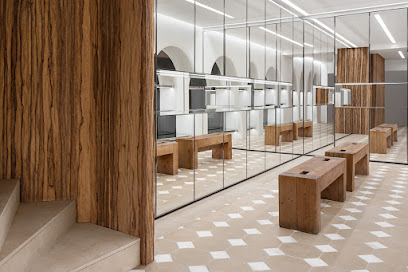
Full Size Riviera
Explore Full Size Riviera for stylish, inclusive fashion that celebrates all body types and enhances your travel wardrobe.

Essential bars & hidden hideouts
Le Bateleur
Experience the lively nightlife at Le Bateleur in Nice, where cocktails, tapas, and live music create the perfect evening atmosphere.

Wine Bar
Explore exquisite wines and delightful pairings at the Wine Bar in Saint-Laurent-du-Var, a perfect retreat for wine lovers and casual sippers.

Bar du Port
Experience the essence of French dining at Bar du Port in Saint-Tropez, where culinary excellence meets stunning harbor views.

Long Bar
Discover the lively atmosphere of Long Bar in Grimaud, where exquisite cocktails, delicious tapas, and live music create an unforgettable experience.

Absinthe bar
Experience the enchanting world of absinthe at the Absinthe Bar in Antibes, where tradition meets creativity in a vibrant atmosphere.

Kelly's pub la Grotte
Discover the vibrant ambiance and exquisite Mediterranean cuisine at Kelly's Pub La Grotte, a must-visit bar and restaurant in the heart of Saint-Tropez.

Bar Le Gorille
Experience the vibrant atmosphere of Bar Le Gorille in Saint-Tropez, where delicious drinks and stunning marina views await.

Restaurant Le Bar du port
Experience exquisite French cuisine with breathtaking views at Le Bar du Port, a culinary gem in Saint-Jean-Cap-Ferrat.

BAY SIDE
Experience the enchanting ambiance and exquisite wine selection at Bay Side, a must-visit wine bar in the heart of Nice.

Pub Le Pitcher
Discover the perfect blend of fine wines and delicious pizzas at Pub Le Pitcher in Villeneuve-Loubet, a charming spot for relaxation and enjoyment.

Cohibar
Experience the vibrant nightlife of Saint-Tropez at Cohibar, where exquisite cocktails meet live music and an electric atmosphere.

Wine Pier
Discover the charm of Wine Pier in Villefranche-sur-Mer: a wine lover's paradise with stunning views and exquisite selections.

Le Phare
Discover the charm of Le Phare in Villefranche-sur-Mer, where great drinks and stunning views create the perfect escape.

BBS The Wine Bar
Experience the charm of Saint-Jean-Cap-Ferrat at BBS The Wine Bar, where exquisite wines and delightful small plates create the perfect getaway.

Le bar à thym
Experience the cozy ambiance and exquisite wine selection at Le bar à thym, a must-visit wine bar in the heart of Sainte-Maxime.

Local Phrases about French Riviera
-
- HelloBonjour
[bohn-zhoor] - GoodbyeAu revoir
[oh ruh-vwahr] - YesOui
[wee] - NoNon
[noh] - Please/You're welcomeS'il vous plaît / De rien
[seel voo pleh / duh ryehn] - Thank youMerci
[mehr-see] - Excuse me/SorryExcusez-moi / Désolé
[ex-kew-zay mwa / day-zoh-lay] - How are you?Comment ça va?
[koh-mohn sah vah] - Fine. And you?Bien. Et vous?
[byehn. ay voo] - Do you speak English?Parlez-vous anglais?
[par-lay voo ahn-glay] - I don't understandJe ne comprends pas
[zhuh nuh kohm-prahnd pah]
- HelloBonjour
-
- I'd like to see the menu, pleaseJe voudrais voir le menu, s'il vous plaît
[zhuh voo-dray vwar luh muh-noo, seel voo pleh] - I don't eat meatJe ne mange pas de viande
[zhuh nuh mahnj pah duh vyand] - Cheers!Santé!
[sahn-tay] - I would like to pay, pleaseJe voudrais payer, s'il vous plaît
[zhuh voo-dray pay-ay, seel voo pleh]
- I'd like to see the menu, pleaseJe voudrais voir le menu, s'il vous plaît
-
- Help!Au secours!
[oh suh-koor] - Go away!Allez-vous en!
[ah-lay vooz ahn] - Call the Police!Appelez la police!
[ah-pay-lay lah poh-lees] - Call a doctor!Appelez un docteur!
[ah-pay-lay uh dohk-tuhr] - I'm lostJe suis perdu
[zhuh swee pair-doo] - I'm illJe suis malade
[zhuh swee mah-lahd]
- Help!Au secours!
-
- I'd like to buy...Je voudrais acheter...
[zhuh voo-dray ah-shuh-tay] - I'm just lookingJe regarde juste
[zhuh ruh-gahrd zhuhst] - How much is it?Combien ça coûte?
[kohm-byen sah koot] - That's too expensiveC'est trop cher
[say troh shair] - Can you lower the price?Pouvez-vous baisser le prix?
[poo-veh voo bay-say luh pree]
- I'd like to buy...Je voudrais acheter...
-
- What time is it?Quelle heure est-il?
[kehl uhr ay-teel] - It's one o'clockIl est une heure
[eel ay uhn uhr] - Half past (10)Dix heures et demie
[dees uhr ay duh-mee] - MorningMatin
[mah-tahn] - AfternoonAprès-midi
[ah-pray mee-dee] - EveningSoir
[swahr] - YesterdayHier
[yehr] - TodayAujourd'hui
[oh-zhoor-dwee] - TomorrowDemain
[duh-mahn] - 1Un
[uhn] - 2Deux
[duh] - 3Trois
[twah] - 4Quatre
[kat] - 5Cinq
[sank] - 6Six
[sees] - 7Sept
[sept] - 8Huit
[wheet] - 9Neuf
[nurf] - 10Dix
[dees]
- What time is it?Quelle heure est-il?
-
- Where's a/the...?Où est un/le...?
[oo ay uh/luh] - What's the address?Quelle est l'adresse?
[kehl ay lah-dress] - Can you show me (on the map)?Pouvez-vous me montrer (sur la carte)?
[poo-veh voo muh mohn-tray (soor lah kart)] - When's the next (bus)?Quand est le prochain (bus)?
[kahn ay luh proh-shahn (bus)] - A ticket (to ....)Un billet (pour ...)
[uhn bee-yay (poor)]
- Where's a/the...?Où est un/le...?
History of French Riviera
-
The French Riviera, known as the Côte d'Azur, has a rich history dating back to ancient times. The region was first settled by the Ligurians, an ancient Indo-European people. Later, it became a Greek colony, with Massalia (modern-day Marseille) serving as a significant trading post. The Romans followed, leaving behind a wealth of archaeological sites such as the Roman baths in Cimiez, Nice, and the ancient amphitheater in Fréjus.
-
During the medieval period, the French Riviera was a mosaic of feuding fiefdoms and burgeoning maritime cities. Key ports like Nice and Antibes grew in importance due to their strategic locations along Mediterranean trade routes. This era saw the construction of many fortifications, including the Château de Nice, which provided defense against pirate incursions and other threats.
-
The Renaissance brought cultural and architectural transformation to the French Riviera. Cities like Menton and Villefranche-sur-Mer flourished under the influence of Italian Renaissance styles. The Baroque period added further embellishments, with the construction of grand churches and palaces, such as the Chapelle de la Miséricorde in Nice and the Palais Lascaris.
-
Monaco, a key part of the French Riviera, has been ruled by the Grimaldi family since 1297. The dynasty's influence is evident in the region's architecture and culture, most notably in the Prince's Palace of Monaco. The Grimaldi family's rule has been marked by periods of conflict and prosperity, shaping Monaco into the glamorous microstate it is today.
-
The French Riviera began to attract international attention in the late 18th and early 19th centuries. With its mild climate and stunning landscapes, it became a winter retreat for European aristocracy. Figures like Queen Victoria and Tsar Nicholas II frequented the region, establishing it as a premier destination for the affluent. The arrival of the railway in the 1860s further boosted tourism, making the Riviera accessible to a broader audience.
-
The Belle Époque period (1871-1914) was a golden age for the French Riviera. This era saw the construction of grand hotels, casinos, and villas, attracting artists, writers, and the wealthy elite. The Promenade des Anglais in Nice and the Hôtel de Paris in Monte Carlo are iconic symbols of this opulent period. The Riviera's allure during this time was immortalized by artists like Henri Matisse and writers such as F. Scott Fitzgerald.
-
The French Riviera played a critical role during World War II. Initially, it was part of the Vichy-controlled Free Zone, but was later occupied by Italian and then German forces. The region saw significant resistance activity and was eventually liberated during Operation Dragoon in August 1944. The scars and stories of this tumultuous period remain a poignant part of the Riviera's history.
-
Post-World War II, the French Riviera reinvented itself as a symbol of luxury and glamour. The Cannes Film Festival, established in 1946, brought global fame to the region, attracting celebrities and cinephiles from around the world. Cities like Saint-Tropez and Cannes became synonymous with the high life, further enhancing the area's reputation as a playground for the rich and famous.
French Riviera Essentials
-
The French Riviera, or Côte d'Azur, can be accessed via Nice Côte d'Azur Airport, which is the primary gateway serving international and domestic flights. Alternatively, you can fly into Marseille-Provence Airport or Toulon-Hyères Airport. High-speed trains (TGV) connect Paris to Nice, Cannes, and other Riviera cities in approximately 5-6 hours. Road access is facilitated by the A8 motorway, which runs parallel to the coast.
-
Public transportation on the French Riviera includes an efficient network of buses and trains operated by companies such as Lignes d'Azur and SNCF. Renting a car is a popular option for exploring the region at your own pace. Taxis and ride-sharing services like Uber are widely available. For a scenic experience, consider using ferries and boats to travel between coastal towns.
-
The currency used in France is the Euro (EUR). Credit and debit cards are widely accepted, especially Visa and MasterCard, though it's advisable to carry some cash for smaller establishments. ATMs are plentiful in cities and towns along the French Riviera. Contactless payment methods are also becoming increasingly popular.
-
The French Riviera is generally a safe destination for tourists. However, petty crimes such as pickpocketing can occur, particularly in crowded areas like markets, beaches, and public transport hubs. Be cautious in places like Nice's old town and certain parts of Marseille at night. Always keep an eye on your belongings and avoid isolated areas after dark.
-
In case of emergency, dial 112 for immediate assistance, which is the universal emergency number in Europe. For medical emergencies, the local hospitals and clinics offer high-quality healthcare services. Pharmacies are readily available for minor health issues. It's advisable to have travel insurance that covers medical emergencies.
-
Fashion: Do dress stylishly but comfortably, as the French Riviera is known for its chic fashion scene. Avoid overly casual attire like flip-flops and beachwear in city centers or upscale restaurants. Religion: Do respect local religious customs, particularly when visiting churches and religious sites. Public Transport: Do validate your ticket before boarding trains and buses. Don't speak loudly or create disturbances. Greetings: Do greet people with a polite 'Bonjour' and a handshake. Don't use first names unless invited to do so. Eating & Drinking: Do enjoy local cuisine and wines. Don't rush your meal; dining is a leisurely activity in France.
-
To experience the French Riviera like a local, visit the weekly markets in towns like Antibes and Menton for fresh produce and artisanal goods. Take part in local festivals such as the Nice Carnival or the Cannes Film Festival. Enjoy a leisurely café experience, and don't miss out on trying regional dishes like Ratatouille, Bouillabaisse, and Socca.
Trending Landmarks in French Riviera
-
Place Giuseppe Garibaldi
-
Royal Fort
-
Fort du Mont Alban
-
Abbaye de Lérins
-
Fort de la Revère
-
Rue Pié
-
Grande Corniche State Park
-
Centenary Monument
-
Monte Carlo Viewpoint
-
Villa Santo Sospir
-
Château de la Croë
-
What To Do Riviera
-
Tour du Masque de fer
-
L'Ange de la Baie by Jean-Marie Fondacaro
-
French searchlight position













